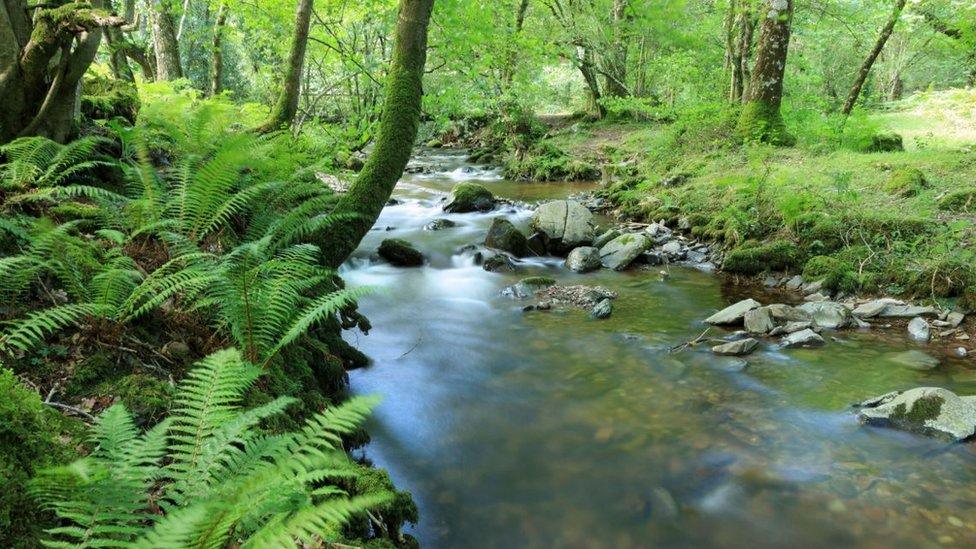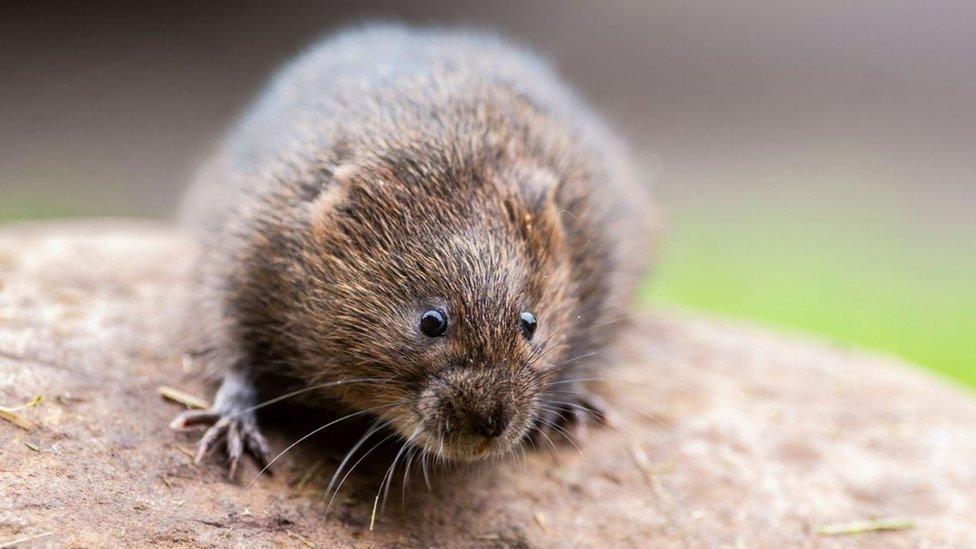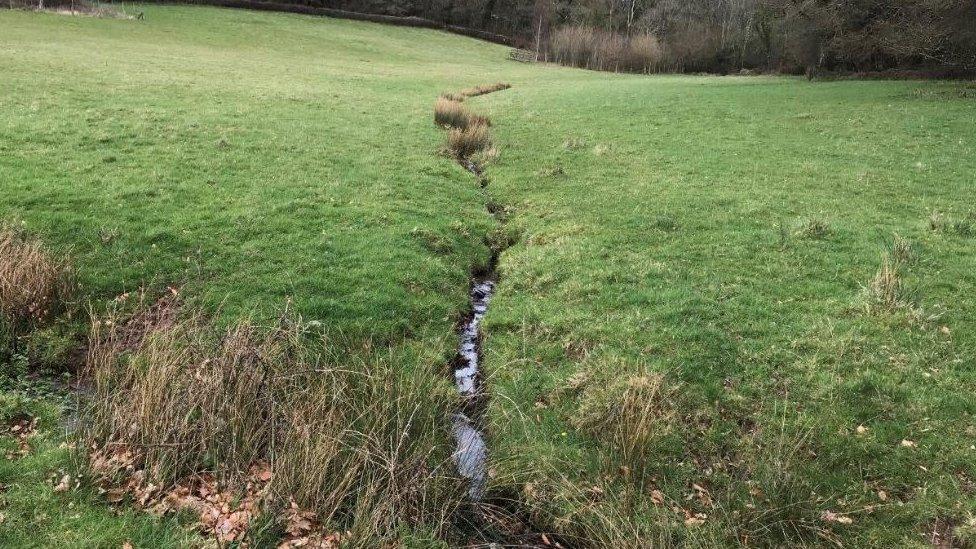Rivers slowed to help wildlife and tackle flooding
- Published

Work is under way to return a tributary of the River Aller, on the edge of Exmoor, to its original flow to allow natural river and wetland processes to develop
A project aimed at tackling flooding by slowing the flow of rivers while also improving riverside habitat for water voles is being trialled.
The work should see rivers flow through multiple channels and pools, as they would before any human interference.
It could also help address the impact of climate change, such as drought by holding more water in the landscape, the National Trust said.
The project is taking place at the Holnicote Estate in Somerset.

The work is expected to help water voles by creating riverbank habitat for them to live in
Work has already begun to return a tributary of the River Aller, on the edge of Exmoor, to its original flow to allow natural river and wetland processes to develop across 10 acres of land.
There would also be some "fast tracked" habitat restoration to create a more natural landscape to support plants and animals including 300 water voles that have been released on the estate over the past year.
If successful, it would be developed across a 33-acre site on the River Aller itself.
Ben Eardley, project manager for the National Trust, said unlike conventional river restoration projects that typically "re-meandered" straightened streams, this project would allow watercourses to flow through multiple channels "like the branches of a tree".
He said over hundreds of years people had simplified and concentrated rivers into single, straight channels that had been disconnected from the landscape, moving water rapidly down stream and providing no buffer against floods, droughts or the loss of topsoil.
"With an increase in flooding and droughts predicted through climate change we need to make our landscapes more resilient to these challenges," he said.

Water courses will be allowed to flow through multiple channels "like the branches of a tree"